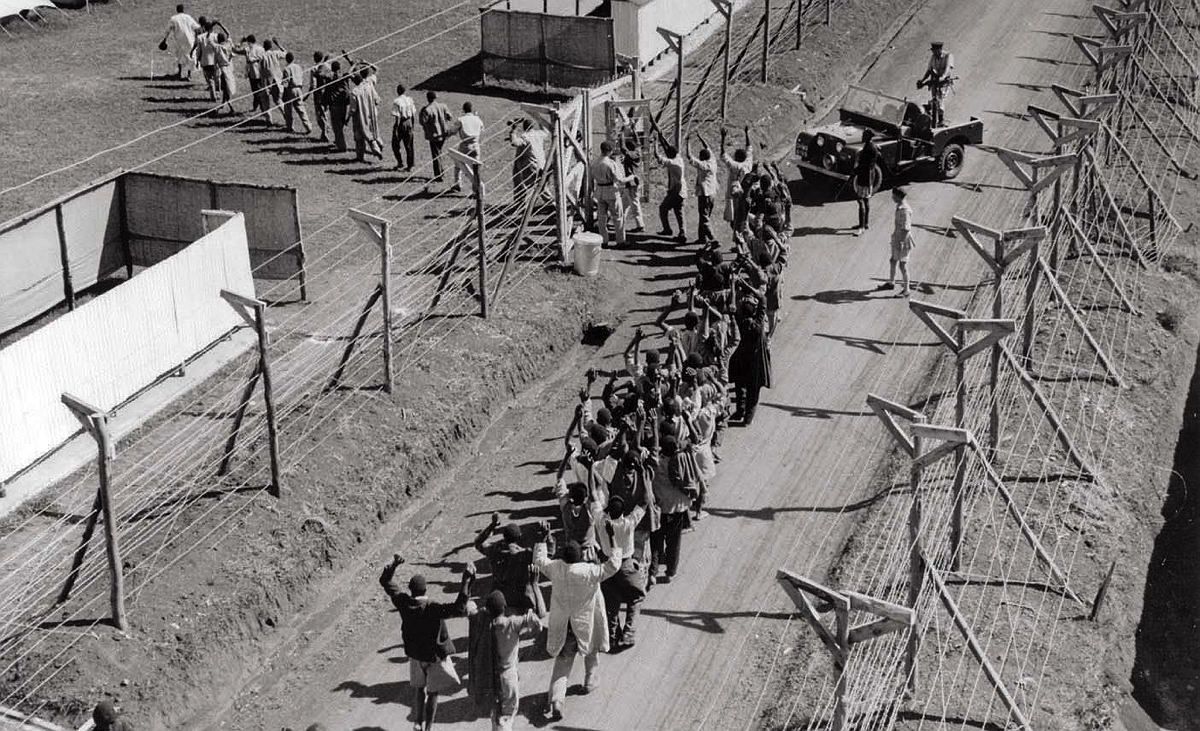Empires fascinate. Not only scholars, but writers of fiction, geographers, sociologists, videogame and movie producers. We historians ask why and how they are they formed: by conquest, surely, though sometimes by marriage or alliances. How are they maintained? Technological adaptation for long-distance communication; bureaucratic management including meticulous record-keeping; exploitation of indigenous labor; cooptation of ambitious locals; creation of an ideological narrative for domestic consumption; and violent repression when necessary. How do they unravel? In counter-violence, secession by politically organized resistance, or replacement by other imperial structures. What are their legacies? Heroic stories and stoic iambic verse at home, followed by recrimination and disavowal; institutions in the former colonies at least cosmetically modelled on those of the metropole; often proficiency in two languages for those once subjugated—or perhaps, as Richard Nixon once lamented as he recalled the fate of ancient Rome while contemplating the American endgame in Vietnam: “nothing but the columns.”
In Legacy of Violence: A History of the British Empire, professor of history Caroline Elkins, an expert on Africa and the British Empire (and, for the sake of disclosure, a departmental colleague of mine), has written a large and vivid account of the British Empire as a story not of constitutional reform nor of capitalism, though both play a role, but “as a history of how and why exceptional state-directed violence unfolded across the second empire [the one created after the loss of the American colonies] and in what way its systems were conceived, enacted, experienced, understood, and exonerated both in the colonies and in Britain.” This perspective arose naturally from her earlier history of the attempted suppression of the Mau Mau rebellion (Imperial Reckoning: The Untold Story of Britain’s Gulag in Kenya, 2005), an account of judicial repression that involved an elaborate system of harsh prison camps and more than a thousand executions and which is recapped as a long chapter in the new book. Her Empire amounts to London’s structure of violent rule over peoples far away from Britain (or close by in Ireland) by means of machine gun, noose, proto-concentration camps, lash (for peoples of color), and torture, based on racial prejudice and the belief in the right to rule “less advanced” peoples until they might at some vague date become ready to behave like Englishmen.
Defenders of the empire—of the parliaments scattered today across Africa and India, of the railroads (though built often to move troops), of the linguistically talented native folk brought to Oxford and Cambridge—will find this a relentless and one-sided indictment. But this reviewer, who has written earlier on our own country’s imperial phases, believes her story captures an essential fact. Violence, as Conrad memorably suggested in Heart of Darkness and as Orwell recalled in Burmese Days, is intrinsic to every imperial effort. Even if not envisaged in advance, at some point it becomes indispensable, whether in the process of accumulating territory and peoples or in trying to hold on to them.
The latter is Elkins’s focus, and the bulk of her account involves the sanguinary efforts to augment and then retain Britain’s domains against the resistance of indigenous populations from the 1857 Indian Mutiny through the two world wars to the 1960s. Early chapters on the Mutiny—along with the parallel effort to repress revolt in Jamaica—are followed by case studies of the empire in action, as its soldiers and administrators work to control violence with counter-violence in Ireland and to resist rebellion as they see it in India after World War I, as well as to control the former Ottoman territories of the Middle East where techniques of aerial bombing became a decisive recourse.

Marching suspects into Langata Detention Camp, Nairobi, Kenya, April 24, 1954. The rebellion against British rule looms large in Caroline Elkins’s history of the empire.
Elkins focuses on World War II in Asia to present the schizophrenic experience of British India. On the one hand, the Raj, then including Pakistan, was a massive resource for materiel and manpower and was understood by Winston Churchill to be the keystone of the imperial arch. On the other hand, it was the home for a nationalist movement insisting on non-cooperation, its leaders periodically imprisoned and divided religiously. Add to the challenges the pressure on Britain by President Franklin D. Roosevelt, A.B. 1904, LL.D. ’29, to relinquish the country, the presence of a charismatic nationalist leader recruiting an Indian National Army as a Japanese ally in neighboring occupied Burma, and the financial burdens after the war such that the British decided they must leave the subcontinent to its own communal furies. Elkins then provides a series of studies of the wars after World War II— in Palestine, Malaya, Cyprus, and Kenya—as British police officers and counter-insurgency experts shuttled among these theaters, attempting to win “hearts and minds,” as the commander for combatting the Malayan Emergency described the effort. (Also to be recommended: Forgotten Wars: Freedom and Revolution in Southeast Asia, by Timothy Harper and the late Christopher Bayly, 2007.)
A generation ago, historians and political scientists liked to contrast a supposedly graceful British withdrawal from empire to the French wars in Indochina and Algeria or the Dutch campaign to reconquer Indonesia and the unprepared Belgian abandonment of the Congo. But Elkins destroys this narrative. She emphasizes how the British colonies not only sought to maintain some degree of overlordship but attempted to merge conflicting communities, each of which thought their moment for territorial control was long overdue: Jews and Arabs in Palestine, Hindus and Muslims in India, Malays and Chinese in southeast Asia, Housa and Yoruba in Nigeria, Greeks and Turks in Cyprus, and the white minorities in South Africa and Rhodesia arrayed against the black communities they sought to keep subjected and segregated. The result was continuing efforts at “legal” suppression—applying a structure of “exceptional” law that sanctioned torture, imprisonment, and execution. And as Elkins notes, the heirs to the new states watched what the British did, not just what they said.
Elkins’s argument goes beyond tallying the mutilated bodies, the travesties of trials, and the emollient rhetoric. Drawing upon a significant literature in history and political theory written during the last two decades, she emphasizes that justifications for empire developed in tandem with liberal doctrines at home. Her John Stuart Mill—whose classic text On Liberty I along with other Harvard undergrads read as an epitome of liberalism in the late 1950s—now emerges as an apologist for British “despotism” in India as based on alleged civilizational superiority. (Readers can follow the theory in Jennifer Pitts’s 2005, A Turn to Empire: The Rise of Imperial Liberalism in Britain and France, 2005.)
Elkins zeroes in on the once venerated Albert Venn Dicey, whose expounding of parliamentary supremacy in the 1880s meant that London’s authority over its colonies could be absolute. She deploys the analysis developed by the contemporary Italian theorist Giorgio Agamben, who has developed the implication of German quasi-fascist Carl Schmitt’s ideas of the legal “exception”: the realm of force outside the law that the law itself provides for. She follows how Britain took the lead in developing the European Convention on Human Rights while carefully insisting the colonies would remain outside its purview.
She does not spare us Churchill’s commitment to empire: his dwelling as a youth on its technical accoutrements—the marvelous effect of dum-dum bullets on bone—as well as his predictions of disaster and shame when it was being dismantled. But she rightly emphasizes that empire was a project that cut across party lines: Ernest Bevin, the trade-union leader who became the resolutely anticommunist foreign secretary of the postwar Labour government, also appears as the crudely resolute defender of the civil service’s empire, and the sad wars of empire after World War II take place on Labour’s watch. Elkins does not ignore the eloquent voices against empire, giving pride of place perhaps to the remarkable West Indian analysts, including C. L. R. James (whose memoir of cricket, Beyond a Boundary, remains an eloquent testimony to what the empire might achieve) and George Padmore, and she reminds us of the current of postcolonial critiques that have emerged from Indian authors.
In contrast to much recent historiography, Elkins does not focus on the economic interests behind empire. Ever since John Hobson and Lenin there has been a huge literature on whether the colonies “paid” the metropole, and if so, which classes. Other fundamental questions have also become perennial: did capitalism “require” imperial expansion to sustain its growth, and how did it assure economic exploitation? Through slavery, peonage, indenture, wage deprivation, or just by prolonging industrial underdevelopment? These issues play little role in this account—Elkins recognizes that empires involve efforts to extract value from subject peoples and colonial resources, but the theme is not really developed. I agree with her that capitalism is inextricably involved with modern empire, but not necessarily the causal impulse. Still, given its importance in the historiography, some closer attention to the economic dimension might have been merited. On the other hand, the author does explain the post-1945 importance of the overhanging debts to India and other Commonwealth countries whose counterpart had been credited as “sterling balances” in London and remained a weight upon British finance and, indirectly, a source of dependence on the Americans.
Elkins’s book makes no effort to compare the toll taken by different national empires. It does not participate in the recurrent debates over imperial benevolence or cruelty. The Dutch in Indonesia, the French in Africa and Indochina, the Germans before their colonies were confiscated at the end of World War I, the Italians in the Horn of Africa, the Japanese in Korea, Taiwan, and Manchuria, and for a while the Americans, all felt it necessary to compete in the “scramble,” if only, or perhaps primarily, to demonstrate their status with respect to their competitors. Vigorous, “civilized” peoples all contributed to the effort, which, as Elkins insists, must rest on pseudo-legal guarantees continually violated in practice—as continued today by the Chinese in Tibet and Uighur-populated territory, and before our eyes by the Russians in Ukraine.
Elkins concludes with two chapters on legacies—“Britain bequeathed its colonies Leviathan—a state with laws, bureaucracies and institutions…that had been foisted on colonial populations”—and she cites the repressive apparatus that has punctuated the postcolonial history of Nigeria, Kenya, Pakistan, India, and elsewhere. She closes with the trial of five aged Kenyans seeking reparation for mistreatment during the Mau Mau struggle on the basis of Britain’s lapse in the common-law “duty of care.” Here her work as a historian converges with her own role as an expert witness. The key to the successful litigation was the belated “discovery” of Kenyan archives that had escaped destruction despite the usual efforts to destroy compromising files. (This practice was hardly surprising given the fate that might be meted out to colonial informants after regime change.) In the Kenyan case, Crown attorneys could not fob off moral and legal responsibility on a supposedly autonomous colonial state that had passed into history.
Elkins has written a monumental book and a necessary history, important for its insistence that the reader confront the underlying violence of empire. I would close with some observations and a question. First: violence is not the only curse of empire. “Soft” imperial rule—clientelism, the manipulation of corrupt court politics, business contracts, and reliance on collaborators—also leaves behind a rotting basis for politics; an account of interwar Egypt might have brought this legacy to light. Colonial dependency prolonged the political immaturity it was supposed to remedy. Moreover, by clumping together rival ethnicities under a supposed “management of difference” and toleration, all empires have made it difficult to extricate themselves from rule.
Finally, the question: Why did empire exert so powerful a hold on the metropole’s imagination? Was the nostalgia for far-flung experiments in colonial “development” or “partnership” merely instrumental sentimentality? International society has replaced the claim of empire to carry out good works—development, hospitals, education—with dense networks of NGOs, but empires offered an alternative, even if often spurious framework. Further, I would suggest that the frameworks of public memory have evolved. The nostalgia for empire testifies also to the “myth” of Britain and her empire standing alone against Germany during 1940 and 1941. The memories inscribed were those of resistance alongside empire. But they are wearing thin. Elkins’s book casts away these once-sacred memories in favor of a merciless documentation of complacency and racism.
Her indictment casts a wide shadow—not only over racist attitudes on immigration that have marked both the United States and Britain, but over elite institutions that have allegedly channeled earlier imperial presumption: All Souls College Oxford, the Royal Institute for International Affairs in London, and the Council on Foreign Relations in New York (second disclosure: the reviewer is a member). We cannot know how the final reckoning with empire will turn out. It is obvious that histories of empire are tied up with contemporary critiques of racism and inequality. Calls to decolonize the university, culture, and the arts reveal the intimate connections between politics and history. Historians face a challenging future and an unruly past.








